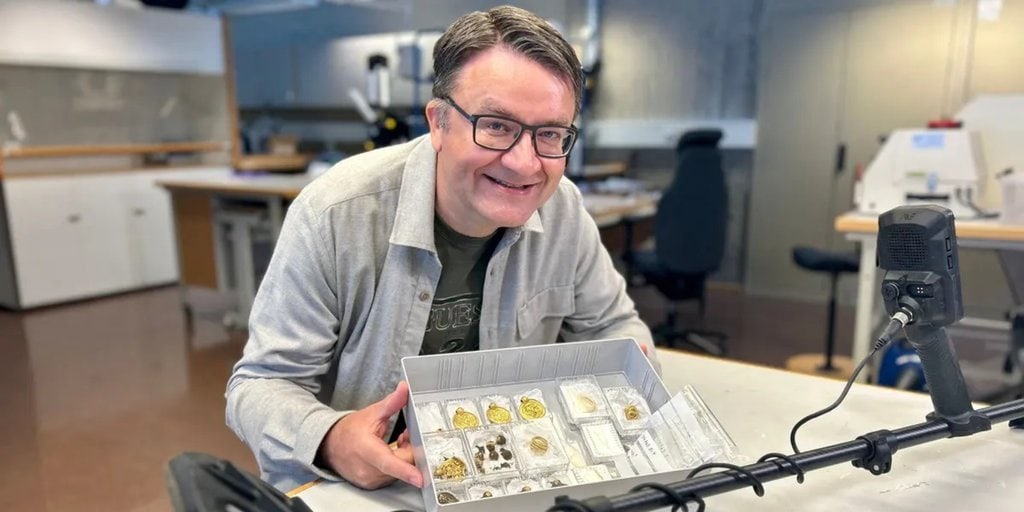
When Erlend Bore’s doctor had advised him to get more active, he decided to take up an unusual hobby: metal detecting. Armed with his newfound treasure-hunting tool, he set off on the scenic Norwegian island of Rennesøy, hoping to stumble upon something interesting. Little did he know he was about to find gold and unearth a remarkable piece of history.
Finding Ancient Gold Jewelry
As he combed the island’s terrain, his metal detector suddenly emitted a sharp beep. Initially, he thought he had stumbled upon a pile of old chocolate coins, but reality exceeded his wildest expectations. What was buried beneath the earth’s surface were nine intricately engraved gold pendants, 10 exquisite gold pearls, and three elegant gold rings.
Astonishingly, these treasures could be traced back to the 6th century C.E., making this discovery the first of its kind in Norway since the 1800s. Ole Madsen, the director of the Museum of Archaeology at the University of Stavanger, couldn’t contain his excitement in a statement. He said that this was the gold find of the century in Norway. Finding such an abundance of gold in one place was indeed a rarity, leaving experts and enthusiasts stunned.
Erlend Bore’s New Hobby
Erlend Bore’s incredible discovery took place during the summer months. After some initial unsuccessful attempts, he decided to change his approach. He looked out over the island’s landscape and wondered where he would have been in ancient times.
Following his instincts, he moved to higher ground, and that’s when his metal detector led him to the unexpected treasure trove. Without wasting any time, he shared a photo of his find with local experts.
What Bore Found
The pendants and beads discovered by Bore were likely once part of a magnificent necklace, a testament to the craftsmanship of the goldsmiths of old. These ornate pieces would have adorned the most influential figures in society during their time. Dating back to 500 C.E., they provide a glimpse into a challenging era marked by crop failures, deteriorating climate, and plagues.

According to Norwegian law, objects older than 1537, including coins from before 1650, become state property. Currently, museum conservators are cleaning and preserving these precious artifacts for public display while Erlend Bore will receive a finder’s fee and continue his newfound hobby.